
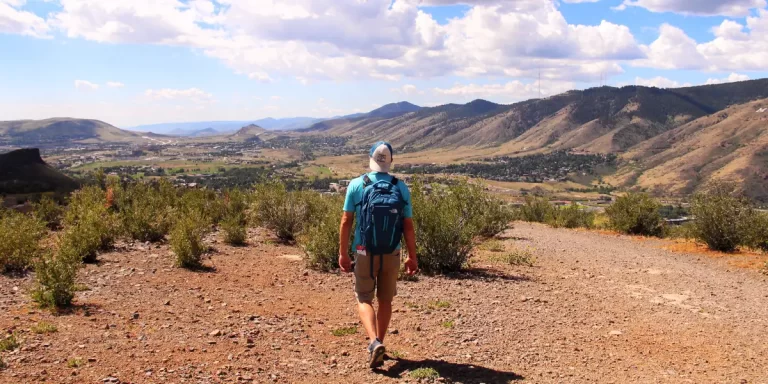
Backpacking in Colorado offers immense variety for outdoor enthusiasts, from the rugged peaks of the Rocky Mountains to the stark desert landscapes of the Colorado Plateau, including popular destinations like Rocky Mountain National Park.
And that’s what this guide is all about – backpacking in Colorado. We’ll provide tips to help you prepare for backpacking in this diverse state as well as showcase the TOP 5 multi-day trails in Colorado.
Interested? Let’s get started.
Here are the premier multi-day trails in Colorado that provide the greatest rewards:
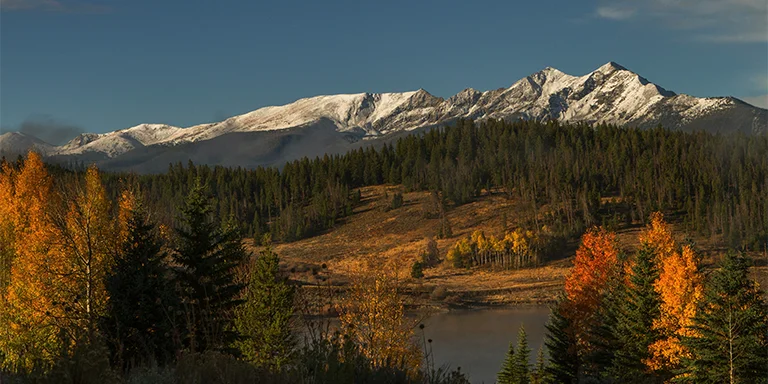
Length: 31.3 mi / 50.3 km
Type: Point to point
Difficulty: Hard
Elevation Gain: 4934 ft / 1504 m
Location: Pike National Forest
Estimated Hiking Calorie Burn: 3800 calories
More Details: See on AllTrails
This challenging 31.3-mile Colorado Trail stretch from Kenosha Pass to Goldhill Trailhead winds through scenic aspen groves, creeks, and mountain passes gaining over 4,900 feet. Highlighted by the tough Georgia Pass climb with rewarding vistas and rocky descents, the well-maintained path offers light-to-moderate traffic for potential solitude. Camping abounds near water sources ideal for backpackers to resupply. Generally accessible late spring to early fall with trailhead parking, it provides a diverse multi-day mountain experience with intermittent cell service.
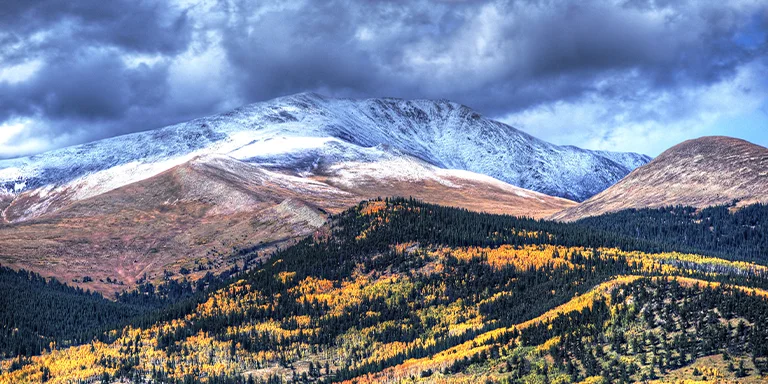
Michael Kirsh, CC BY-SA 2.0, via flickr
Length: 30.3 mi / 48.7 km
Type: Point to point
Difficulty: Hard
Elevation Gain: 3385 ft / 1032 m
Location: Pike National Forest
Estimated Hiking Calorie Burn: 3500 calories
More Details: See on AllTrails
The popular 30-mile point-to-point Colorado Trail near Jefferson offers a challenging yet scenic route for hiking, backpacking, and snowshoeing through aspen forests with phenomenal mountain views. Despite crowds at the trailhead parking, solitude can be found on this well-maintained trail during quieter times, especially deeper into the Lost Creek Wilderness area with its camping spots. Fall hiking provides stunning aspen colors at their peak along this diverse, year-round trail boasting spectacular scenery from start to finish as it winds through groves and up to breathtaking overlooks.
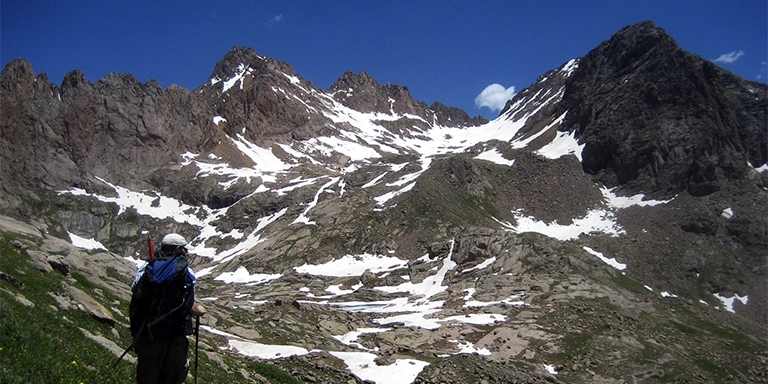
Mouser Williams, CC BY-SA 2.0, via flickr
Length: 38.4 mi / 61.8 km
Type: Out and back
Difficulty: Hard
Elevation Gain: 10 741 ft / 3274 m
Location: Weminuche Wilderness
Estimated Hiking Calorie Burn: 5100 calories
More Details: See on AllTrails
This grueling 38.4-mile out-and-back near Rico, Colorado demands very experienced hikers, gaining over 10,700 feet across 22 hours. Passing mountain meadows and aspen groves, it ascends towering peaks like Mount Aeolus, potentially requiring up to Class 4 technical climbing skills. The driest, most comfortable conditions are late June through September. Day hikers can shorten the 6.67-mile approach via the Durango & Silverton Railroad. Primitive camping is available in Chicago Basin with required bear precautions. Though crowded weekends, weekdays offer solitude on this strenuous alpine challenge.
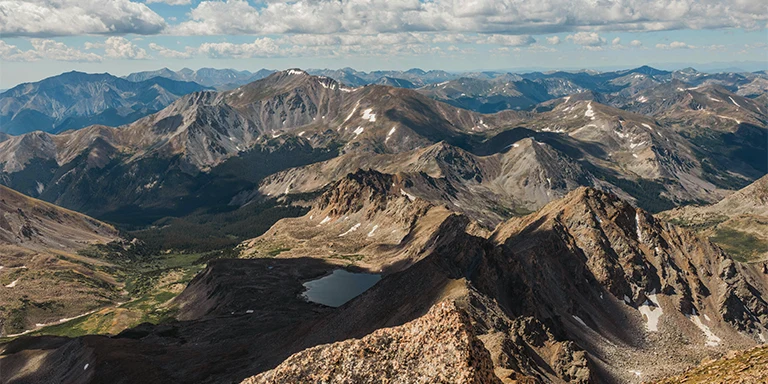
Length: 153.3 mi / 246.7 km
Type: Loop
Difficulty: Hard
Elevation Gain: 33 556 ft / 10 228 m
Location: Collegiate Peaks Wilderness
Estimated Hiking Calorie Burn: 20 600 calories
More Details: See on AllTrails
This grueling 153.3-mile loop trail near Buena Vista offers experienced backpackers stunning alpine scenery over an average 79-hour trek. The eastern section provides acclimation before the breathtaking western alpine vistas, especially under snow. Camping along the route and visiting June through September allows optimal conditions with fewer crowds for solitude. Wildlife like moose, bears, and chipmunks inhabit the area. A resupply stop at scenic Monarch Pass enables breaking up this multi-day journey to fully experience Colorado’s grandeur.
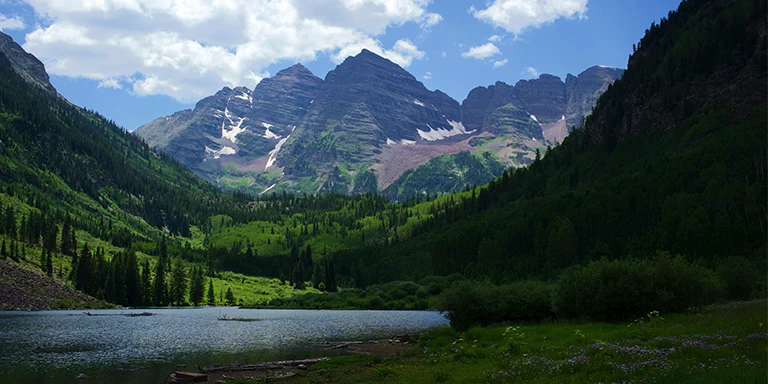
Length: 40.3 mi / 64.9 km
Type: Loop
Difficulty: Hard
Elevation Gain: 11 227 ft / 3422 m
Location: Maroon Bells Snowmass Wilderness
Estimated Hiking Calorie Burn: 5300 calories
More Details: See on AllTrails
This strenuous 40.3-mile loop backpacking trail near Aspen promises solitude and breathtaking alpine scenery over a challenging 2-3 day trek. Winding along creeks and through aspen groves, it climbs over mountain passes with potential for bushwhacking. Early summer allows ideal snow-free yet uncrowded conditions, though creek crossings and lingering snowfields require preparation. Highlights include camping at alpine Lake Capitol and reaching a western jeep road access. The high elevations necessitate acclimatization for this true Colorado wilderness adventure.
Colorado’s weather can vary widely depending on the region and elevation, so it’s important to consider the specific location and time of year:
Before making your gear selection, take a look at the weather statistics for Colorado (Colorado Springs):
| Jan | Feb | Mar | Apr | May | Jun | Jul | Aug | Sep | Oct | Nov | Dec | |
|---|---|---|---|---|---|---|---|---|---|---|---|---|
| High °F | 44 | 47 | 54 | 61 | 69 | 80 | 84 | 81 | 75 | 64 | 52 | 44 |
| Low °F | 20 | 23 | 29 | 36 | 44 | 53 | 58 | 57 | 49 | 38 | 28 | 21 |
| Rain/Snow (D*) | 1 | 2 | 3 | 5 | 7 | 6 | 10 | 10 | 5 | 3 | 2 | 1 |
Not sure if Colorado is right for you?
Don’t forget to check out our backpacking guides for Kansas and Utah.
While backpacking in Colorado, you can have campfires, but there are some important regulations. Fires are only permitted in established fire rings in designated campgrounds. Outside of campgrounds, fires are banned when the local fire danger is rated as high or extreme – you must check with local officials on fire restrictions.
Check the weather before and during your trip, especially in higher areas where conditions can change quickly. Bring waterproof layers, extra food, and supplies in case of delays. Use a map, compass, or GPS for navigation. Inform local rangers of your route and return date. Hike with at least one person for safety. Carry first aid and communication devices. Bear-proof scented items and store food properly at night in your sleeping bag or bear canister. Be cautious of lightning during afternoon thunderstorms—seek low, open areas away from water and tall objects if a storm is coming during your explorations of the great outdoors and natural surroundings.
Use bear-resistant food containers and never keep food in your tent to avoid black bears. If you encounter a bear, make noise and back away slowly. Cougars rarely attack, but stay close to kids and don’t run if one is nearby—make noise, appear big, and back away slowly. Watch for rattlesnakes, give them space, and be cautious where you place hands and feet. Moose, especially females with calves, can be aggressive, so keep a distance and retreat if they display aggressive behavior. Other animals like deer, elk, coyotes, and birds usually pose no threat, but maintain a safe distance and avoid feeding them.